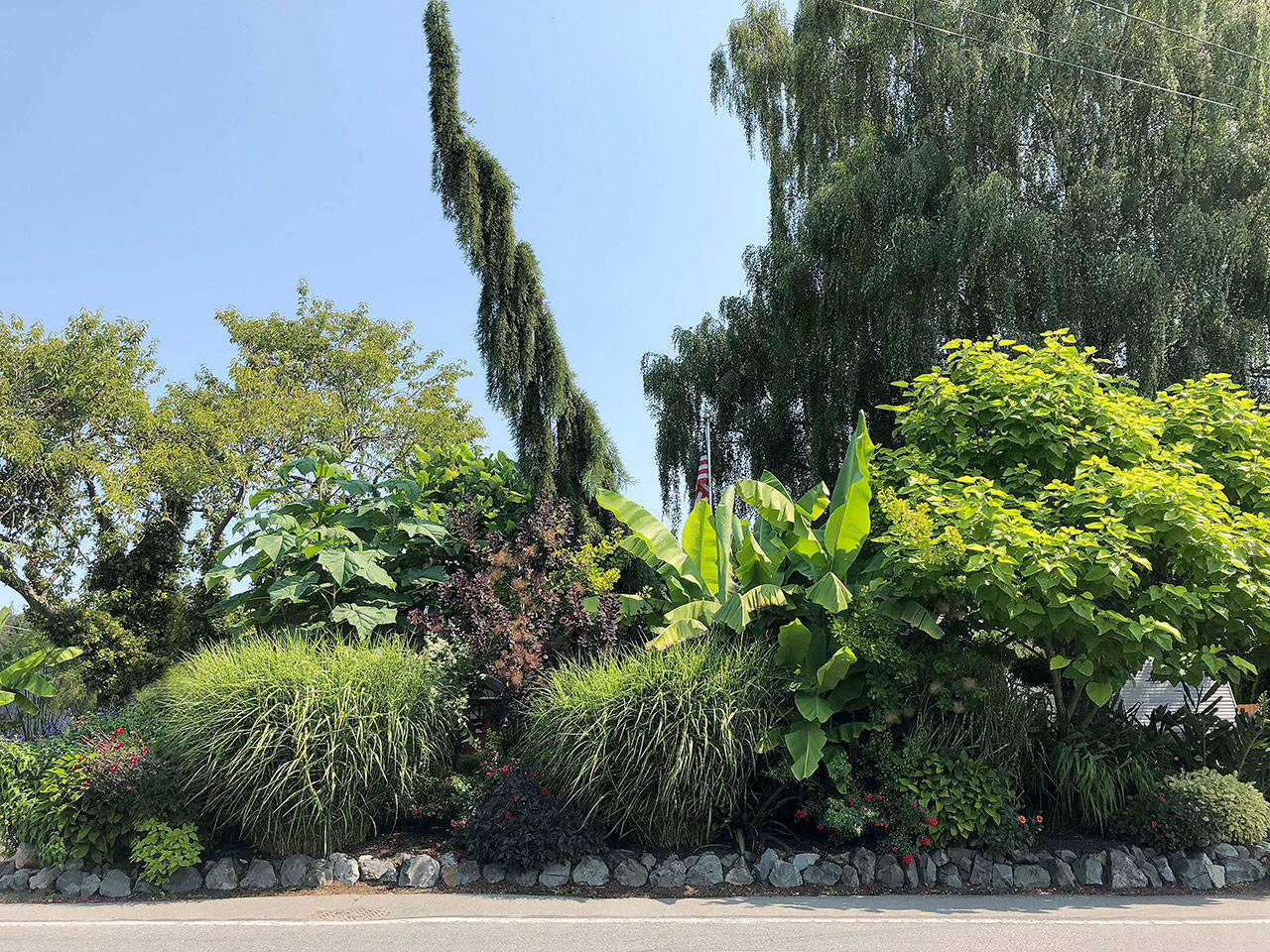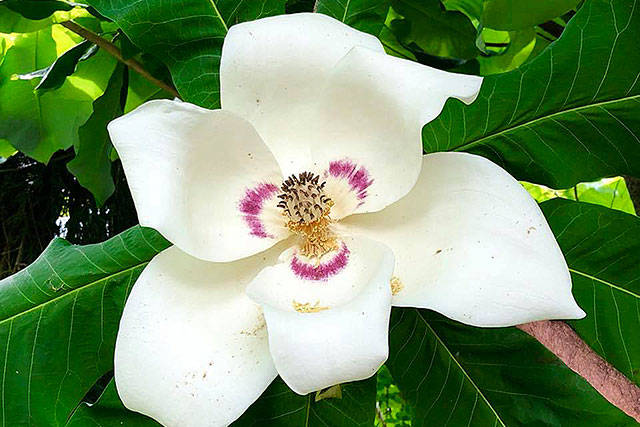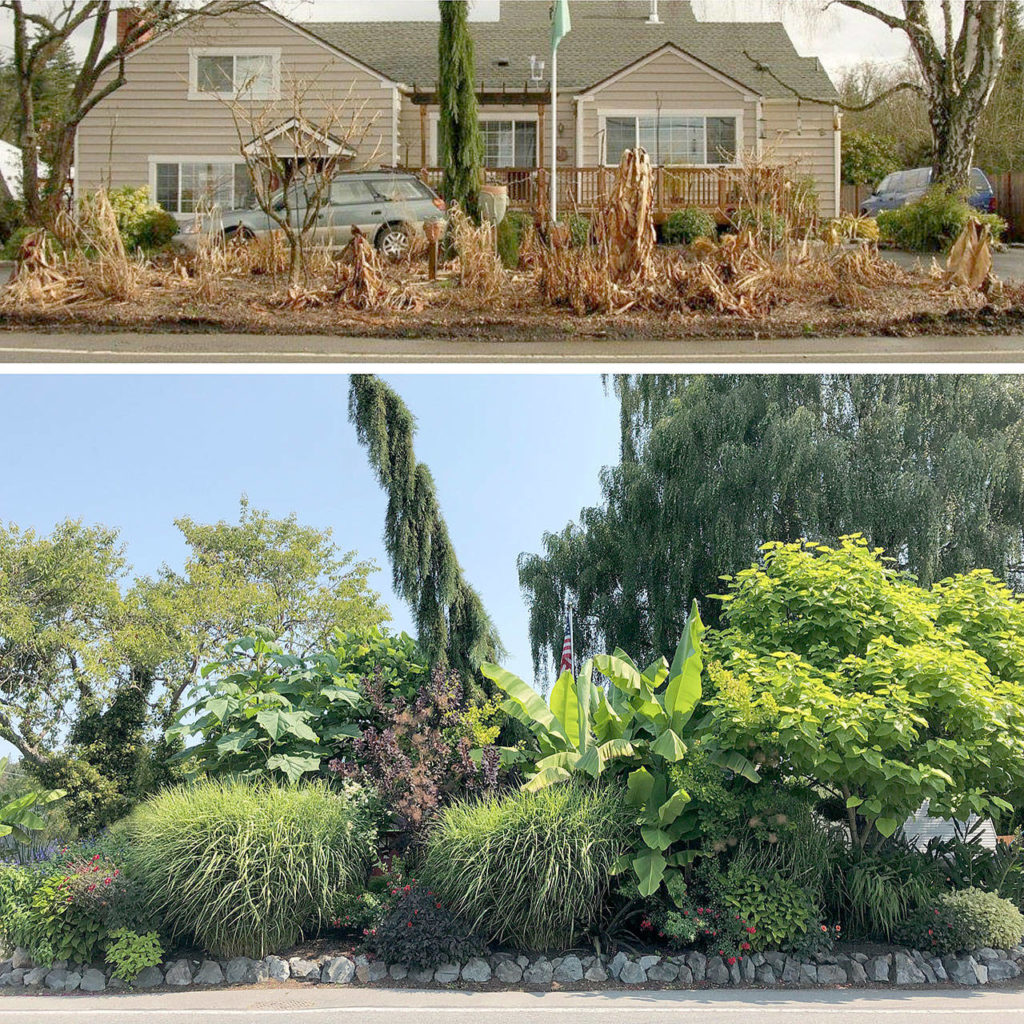Forget for a minute that I am a professional horticulturist and have worked in the field for more than 50 years. Try to think of me a just an ordinary homeowner who moved into his house 30 years ago and inherited a rather neglected landscape.
This is the story of one of my gardens — how it became what it is today and how it is evolving into what it will be tomorrow.
In the front of my house — out in full sun facing west — is a circle drive, which, when I moved into the home in August 1989, contained a pathetic-looking lawn. You can well imagine what most lawns look like in the month of August. It was mostly brown, fairly weedy and had nary a shrub or tree to break up the horizontal surface.
Surely, I thought, I could do better. So I put some water and fertilizer on it and at least made it presentable for a couple of years. Then, in 1992, I found myself in the tough position of having way too many roses left over in the nursery and I wondered how on Earth I was ever going to get rid of them. That is when I had the epiphany to take out the grass and plant a rose garden.
It was a beautiful rose garden, if I say so myself, very formal. Picture 100 roses arranged in concentric arcs mirroring the curvature of my driveway. In the center, for a focal point, I planted a weeping giant sequoia, which is now 30 to 40 feet tall, and I am pretty sure I also had an incredibly ornate bird bath as well. I would irrigate my pretties in furrows, which took all day but I only had to do it once or twice a month. I pruned and fertilized and sprayed them during the season and hilled them up with mulch in the winter.
It was all a labor of love, but also a source of major frustration because it seemed like every spring, just about the time they would come into bloom, we would have a rainstorm and all the blooms would get trashed. After 10 years of being tormented by Mother Nature, I finally went postal and tore them all out.
For a couple of years after my meltdown, I planted large tropical plants like red bananas, Brugmansias, taros and cannas. I had to dig them all up in the fall and put them in a greenhouse for the winter. Needless to say, the novelty of this ordeal quickly wore off and I started replacing the tender tropicals with hardy shrubs, trees and perennials that had a tropical look but could be left in the ground year-round. Thus was the beginning of what you can see today.
If you drive by, you will see a large golden-leafed Catalpa on one end, under-planted with the most exotic-looking hardy ginger (Hedychium coccineum “Tara”) which is just about to come into bloom. On the other end is a Paulownia that I coppice (cut back) to 3 feet every year. This causes it to erupt into rampant growth in spring, reaching 20 feet tall by fall, sporting leaves 18 inches across. It is absolutely Jurassic-looking.
There is also a Magnolia macrophylla that has the largest leaves of the genus and flowers that are 1½ feet across.
Scattered throughout the composition are several golden and purple smoke bushes (they are trees at this point), a large clump of darmera, fatsia, aucuba, golden Himalayan honeysuckle, several large masses of zebra grass and Japanese forest grass, a colorful perennial called Painter’s Palette, and not to be overlooked, an epic clump of Musa basjoo, also known as the Japanese fiber banana. There is a lot going on in this 700-square-foot garden. As you drive down Sunnyside Boulevard, it truly looks like an oasis.
What I have always found entertaining is to watch the transformation from winter, when it looks like a nuclear waste zone that you can see right through, to this time of year when it is an impenetrable mass of vegetation. It is a miraculous change that I find absolutely mind-boggling.
But wait, there’s more.
Now that the trees have matured, I have been able to limb them up. Last week, I carved out a secret path inside of this garden where I can plant yet more exciting treasures. I already have a stash of a dozen or so waiting in the wings to be added to my jungle. I can hardly wait!
Please, drive by if you can and experience the wonder of this little oasis. It brings me immense joy, and I hope it will do the same for you.
Steve Smith is the owner of Sunnyside Nursery in Marysville and can be reached at info@sunny sidenursery.net
Fall containers
Attend a free class about revamping containers with fall foliage at 10 a.m. Sept. 1 at Sunnyside Nursery, 3915 Sunnyside Blvd., Marysville. For more information or to sign up, visit www.sunnysidenursery.net.
Talk to us
> Give us your news tips.
> Send us a letter to the editor.
> More Herald contact information.



























